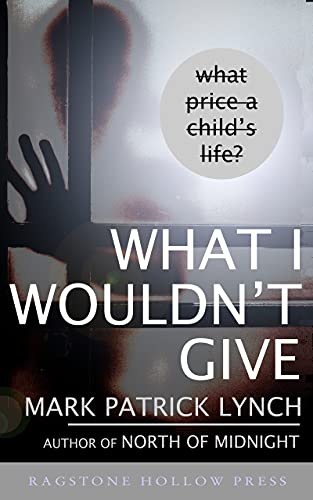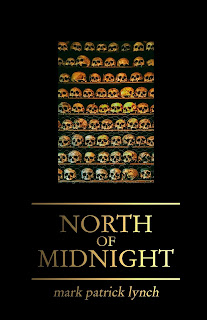hawksmoor by peter ackroyd
Friday 19 June 2015–
Hawksmoor,
London,
novel,
Peter Ackroyd,
review
Guide
to “Thoughts on HAWSKMOOR.”
1.) The Thoughts must be read in linear fashion,
though what linear, in this sense, entails is subject to the individual
Reader’s interpretation. The review may or may not touch on the points raised
in “The Rules of Thoughts on HAWKSMOOR”. Objectivity is of a Third Person
stance. Objectivity is from a First Person stance.
2.) The flow of Time moves both ways. Time is
not a Measure extending in but one direction; rather it is a Loop. Echoes move
both ways around the Circle of the Loop. They may be Cacophonous, they may be
whispers.
3.) William Golding’s THE SPIRE can be
Referenced.
4.) The oldest Character can be seen in
accumulation of stones and mortar for Flesh, passages and highways for Veins.
Thoughts are expressions of movement, of building. Height may be seen as a form
of higher Thinking; depth may be seen as pollution, corruption. Fever is a
fire. Experience of Fever can bring about Change, can allow filth already about
the body to prosper and invade new hollows of the city, to spread and exert
influence. Reflection is an Echo that runs around the Loop, forever in Flux.
5.) Dissection of bodies may bring Revelation or
provide more questions. Dissection of bodies may be an allegory of the search
for Truth in an object Deceased and therefore out of the standing of Time; an
object no longer travelling in Loop. Dissection of a body can be seen as
Enlightenment triumphing over Barbarism. Blood is shed.
6.) At no Time will the Thoughts sink into
archaic English and forms of address which may be seen as outré and wearying in
the short-term, but which may also, over the course of a narrative so long as a
novel, be acceptable for the reader. Said archaic language will not willfully be
subject to Slippages, reductions in paragraph length and Accommodations to
dialogue attribution more appropriate to a form of address 250 years after the
supposed time of said Writing being set on paper and subject to the Telling in
the novel.
7.) The Protagonists will be talked about in
Mystical Terms. His appearance, as solver of Mysteries, will be ineffable, a
reflection on the body-city. His concern will be Time. There shall be Echoes.
No one stands Alone. Patterns Repeat. The Antagonist will be forthright, be
about his Stool, rank with Bodily Miscretions. (And words may be made up.)
8.) Linearity is not assured.
9.) The Resolution of Mystery is not assured.
10.) The flow of Time will move both ways.
“Thoughts
on HAWKSMOOR”
It’s
no coincidence that the eponymous protagonist of HAWKSMOOR makes his first
appearance midway through this novel, and then is seen as an insubstantial
figure, a reflection on the backdrop of London. London is Ackroyd’s great
obsession. Here is a novel playing with the concept of time, and with it literary
technique and the linear notion of story as well. Characterization and
engagement with such is not the novel’s concern, reducing some to ciphers and
walking plot devices. What seems set in stone is not quite what we imagine it
to be. Human beings are glistening tears of sweat on the stone and brick
body-city that is London, without the necessary imagination required to step
outside the confines of their narrow limits of perception and therefore
understand the longer term point of view someone or something as old as a city
might hold on matters of time and change.
Peter
Ackroyd’s near delirium-inducing passages are dense – sometimes to the point of
losing their meaning to this reader – and they shift from their focus too
often, as well as flitting between character perspectives. Too often at the
start of one chapter, the Point of View Character is not the person with whom
we think we are initially investing our emotions for the length of the
narration. This may be an intentional device the author is employing, but can
strain the trust between reader and writer, especially when the characters that
the reader invests so much time in coming to know are gone never to be seen
again in the book.
There
are triumphs, though. The at first trying archaic language, with its
intentional misspellings of familiar words, eventually gains a momentum if the
reader persists, and as the book continues it begins shaping its structure
toward the more modern form of storytelling employed to convey the setting
circa 250 years on from the original narrative. In reflection of this – and
reflections are essential to glean anything close to an understanding of this
work – the modern passages dull to a more archaic telling. Dialogue is
(intentionally?) stilted, and sounds very unlike speech anyone would recognize as such outside of an Agatha Christie novel.
Foundations
and their importance are explored in forms of intertextuality if we consider
the book itself as a form of the story being shaped, the writing of which is
akin to the building of a church. In William Golding’s THE SPIRE, a priest’s
ambitions are too grand for the foundation upon which he attempts to build
them; Golding knew, as does Ackroyd, that a shudder from the top of a spire
trembles through the heights to the depths of a building, and that it is not
always obvious from which direction the reverberations first start moving.
Time
is important, and the time this book was written in must be considered. It
wasn’t the only piece of work from this period – the mid nineteen-eighties –
that explored the establishment of older, often benign pagan rituals being
smuggled into new temples. The allegory/metaphor isn’t hard to spot in a time
when wealth was the new religion in Thatcherite Britain, and stories were
appearing where older Gods – meaning society and goodness of character, the
rejection of greed – were secretly hidden in edifices of power. (Harking back,
A CHRISTMAS CAROL isn’t much different.)
But
for all its cleverness and ambition, does HAWKSMOOR succeed? For this reader
only in part. While there’s much to be admired – Ackroyd’s portrayal as London
as a character, and his deep and rich knowledge of the past – as a friend of
mine told me when I mentioned I was reading it: “It’s a flat book, cold and
distant.” I agree; there are no characters in this book that snag you
emotionally. You are expected to engage with a conceit almost, rather than any
personality. Certainly the role of women in the book is a small one, bordering
on the misogynisticly slim.
HAWKSMOOR
is the result of someone being clever rather than engaging: a read for
reading’s sake, not to be returned to too quickly. It’s trying stuff and you
know the ending is going to be ambiguous to the point of a fade out long before
you arrive there, and I’ve read far too many endings like that to be happy with
them unless the writing’s exceptional. And it wasn’t here.
You
could ask, What’s it all about, Alfie? But it wouldn’t matter; the author never
knew.
Disclaimer
to “Thoughts on Hawksmoor”.





